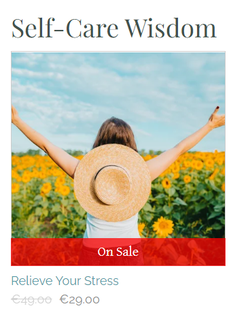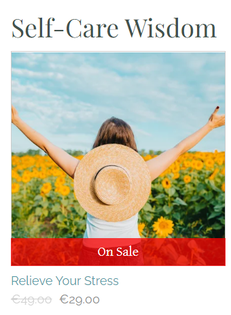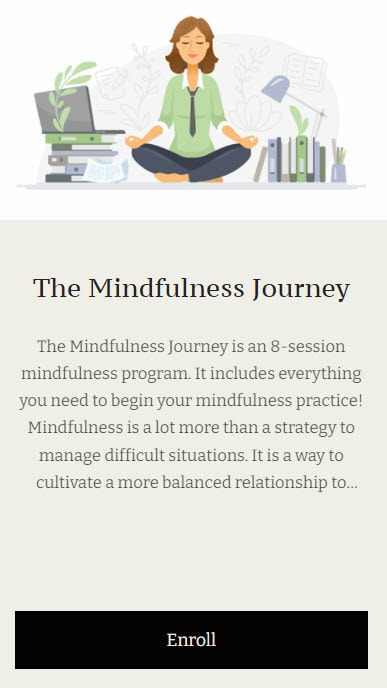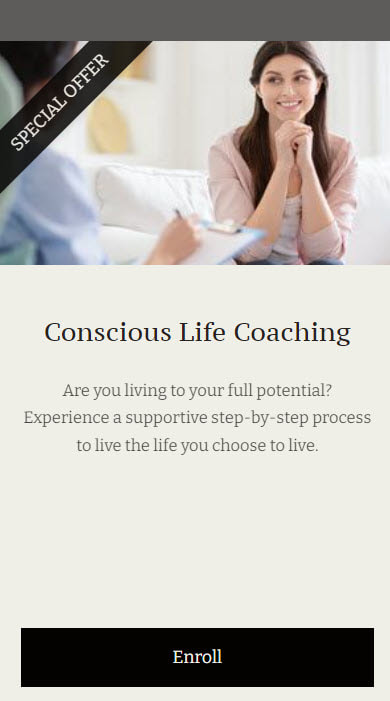|
Discover what the science says about teas and how certain tea herbs can promote a sense of calm. Did you know that some teas can contribute to anxiety (i.e., caffeinated teas like black tea and green tea) while other teas relieve anxiety? If you’re feeling stressed an easy was to feel a bit calmer can be through tea. Here are the teas that science says can help promote a sense of calm. *Tap on the tea name to access tea recipe. 1. Passionflower TeaResearch has shown that passionflower can improve sleep [1] and help people better manage anxiety [2]. Passionflower can be a bit bitter and so you may want to mix it with other teas. 2. Peppermint TeaThe smell of peppermint tea has been suggested to reduce depression and anxiety [3]. 3. Chamomile TeaChamomile is long thought to be a soothing, calming tea. Indeed, research suggests that long-term use of chamomile can reduce anxiety symptoms [4]. 4. Dandelion Root TeaDandelion root tea isn't often considered a calming tea, but if you've been stressed for a long time, dandelion tea may be exactly what you need. It helps cleanse the liver and increase bile production. So, if your stress has been messing with your digestion or your life, try dandelion tea. 5. Ayurvedic Detox TeaAnother calming tea is Ayurvedic detox tea. It's a mix of herbs that help the body detox. And when the body has fewer toxins to deal with, it can relax more easily. You can find Ayurvedic detox teas on Amazon. 6. Lavender TeaLavender has been linked to stress reduction and calmness. But it's important to keep in mind that lavender may have estrogenic properties [5]. So, if you have any signs of estrogen dominance or other hormonal issues, you might want to stay away from lavender. 7. Lemon Balm Tea (Melissa Tea)Lemon balm appears to be effective in reducing anxiety and depression symptoms. It appears to work by boosting GABA [6]. So, if you think your anxiety is related to low GABA, Lemon balm tea may be a good tea for you. 8. Ashwaganda TeaAshwaganda is an adaptogen. Adaptogens are herbs that are thought to be effective in reducing stress and anxiety. Therefore, Ashwaganda tea may indeed be a good tea for calmness. 9. Milk Thistle TeaMilk thistle is another detox herb that can help the body rid itself of toxins. So although the calmness-inducing effects might not be immediate, milk thistle can help reduce stress in the body. 10. Green TeaGreen tea is high in l-theanine, an amino acid that might reduce anxiety [7]. However, green tea is high in caffeine, and caffeine is a known anxiety producer. Green tea is also high in quercetin. Because quercetin has catechol structure, it is processed by our bodies in the same way as epinephrine and norepinephrine. If our bodies are busy processing quercetin, we may have a hard time processing these other stress chemicals, so we might choose an l-theanine supplement instead of green tea, or at least opt for decaf green tea. Hopefully, this list helps you find some teas for calmness. references
1. Ngan, A., & Conduit, R. (2011). A double‐blind, placebo‐controlled investigation of the effects of Passiflora incarnata (passionflower) herbal tea on subjective sleep quality. Phytotherapy Research, 25(8), 1153-1159.
2. Dantas, L. P., de Oliveira-Ribeiro, A., de Almeida-Souza, L. M., & Groppo, F. C. (2017). Effects of passiflora incarnata and midazolam for control of anxiety in patients undergoing dental extraction. Medicina oral, patologia oral y cirugia bucal, 22(1), e95. 3. Vaezi, A. A., Parizi, S., Vahidi, A. R., & Tavangar, H. (2017). Study the effect of inhalation of peppermint oil on depression and anxiety in patients with myocardial infarction who are hospitalized in intensive care units of Sirjan. Journal of Medicinal Plants, 2(62), 55-62. 4. Mao, J. J., Xie, S. X., Keefe, J. R., Soeller, I., Li, Q. S., & Amsterdam, J. D. (2016). Long-term chamomile (Matricaria chamomilla L.) treatment for generalized anxiety disorder: A randomized clinical trial. Phytomedicine, 23(14), 1735-1742. 5. Ramsey, J. T., Li, Y., Arao, Y., Naidu, A., Coons, L. A., Diaz, A., & Korach, K. S. (2019). Lavender products associated with premature thelarche and prepubertal gynecomastia: case reports and endocrine-disrupting chemical activities. The Journal of Clinical Endocrinology & Metabolism, 104(11), 5393-5405. 6. Yoo, D. Y., Choi, J. H., Kim, W., Yoo, K. Y., Lee, C. H., Yoon, Y. S., ... & Hwang, I. K. (2011). Effects of Melissa officinalis L. (lemon balm) extract on neurogenesis associated with serum corticosterone and GABA in the mouse dentate gyrus. Neurochemical research, 36(2), 250-257. 7. Higashiyama, A., Htay, H. H., Ozeki, M., Juneja, L. R., & Kapoor, M. P. (2011). Effects of l-theanine on attention and reaction time response. Journal of Functional Foods, 3(3), 171-178. Online Microlearning - Discover 4 steps to understand your stress level, reduce your stress level, and prevent stress from coming back. You’ll do this through self-paced lessons, exercises, and self-reflection that can help you learn more about how stress affects you and your health.
Learn more about rumination and tips to help you overcome obsessive thinking. Rumination is often defined as a repetitive thought cycle focusing on causes, consequences, and symptoms of one’s current negative state. For example, experiencing an embarrassing incident is an unpleasant experience, and if that isn’t bad enough, we often keep thinking (or ruminating) about the incident after it happens. When you obsessively think about a negative situation and find that you can’t stop, it will likely make you feel worse. That’s how rumination can transform a minor or trivial mistake into a major catastrophe. Here are some things that may lead to rumination:
The Two Types of RuminationRuminative thoughts are obsessive in nature and can be divided into two subtypes: reflective and brooding. The reflective component refers to a cycle of thinking that is analytical and focuses on problem-solving, which is the healthier subtype, whereas brooding involves “a passive comparison of one’s current situation with some unachieved standard” (Treynor et al., 2003, p. 256). Brooding can lead to negative self-talk and mental health issues such as substance abuse, depression, and anxiety. The key difference between reflection and brooding is that reflection involves thinking about actions aimed at changing the situation or relieving distress, making it more adaptive. How to Stop RuminatingGratitudeExpressing gratitude can seem silly, but research suggests that gratitude is inversely linked to rumination (Liang et al., 2018). The practice of gratitude may slowly help you even be more appreciative of the negative and transform it into a positive. How can you start a gratitude practice? It can be as simple as listing three things you’re grateful for every morning. Try to make them as specific as possible. Body AwarenessBody awareness can help us shift our attention to the present moment, which can help reduce rumination. One study found that people with high body awareness were less likely to ruminate. When you find yourself ruminating, try doing a quick body scan. Notice the different parts of your body and the physical sensations. Let this ground you in the present moment as your thoughts begin to dissolve into the background. MeditationPeople who have a consistent and long-term meditation practice are less likely to report rumination and symptoms of depression (Hemo & Lev-Ari, 2015). Meditating can be a helpful practice for combating rumination by improving emotional awareness, staying present, reducing focus on the self, and building self-compassion. Reduce focus on the selfPsychology research shows that paying too much attention to the self can play a powerful role in mental illnesses. What thoughts do you normally have when you’re ruminating? It’s likely that a lot of your obsessive thoughts are centered on you (i.e., your situation, emotions, relationships, etc.). Mindfulness can help reduce this self-focus and instead transform it into self-awareness. Self-compassionPeople who ruminate often criticize themselves and have low self-esteem. To alleviate this, it’s helpful to show self-compassion. Practicing self-compassion can alleviate rumination. In fact, people who practice self-compassion are less likely to ruminate and have depression (Svendsen, 2017). Compassion can also help reduce self-focus by connecting us with others. In SumIf you struggle with this, try out some of the tips above and see if they help you. Making an effort to stop ruminative cycles is the first step. references
Learn all about overthinking, why it is unhelpful, and how to stop. Has anyone ever told you, “You’re overthinking it”? Then you’re not alone. Many of us are familiar with the experience of overthinking. Generally, “overthinking” refers to the process of repetitive, unproductive thought. Since thoughts can be focused on many different things, research has generally differentiated between “rumination” about the past and “worry” about the future. Regardless of which word we use, we are talking about two versions of overthinking loops that don’t seem to have a resolution. “Over”-thinking involves thinking that is not getting us anywhere and is not helpful to us. So, if you notice that you are stuck thinking about the same issue repeatedly but are not coming to any sort of “solution,” you may be overthinking. So, what sorts of things do we tend to overthink about? The PresentIt is also possible to overthink aspects of the present, such as your circumstances, relationships, personality, or identity. Do you wonder day in and day out whether you are in the right relationship, job, or city? Your relationship with yourself can be shaped largely by the thoughts you have about yourself in the present. Do you tend to think of yourself positively or do you tend to overthink about your perceived character flaws and mistakes? The FutureOverthinking about the future often falls into the category of “worry.” You might be worried about something in the short term like an upcoming presentation for school or work. Or you might be preoccupied with more long-term existential concerns, like “will I ever feel fulfilled in life?” or “what if I never find a partner?” Why is Overthinking UnhelpfulWhen you are overthinking, you are likely trying to solve a problem in your life. Am I pursuing the right career? Is this relationship right for me? How can I get a better handle on my finances? The catch-22 here is that overthinking harms our ability to make decisions. van Randenborgh and colleagues found that rumination negatively affected individuals’ decision-making processes, with ruminating participants finding decisions more difficult and being less confident in their decisions (2010). Research has also found a strong association between overthinking and mood (Segerstrom et al., 2000). Future-focused worry has been associated with anxiety (McLaughlin et al., 2007). And research suggests that changing worried thoughts can reduce anxiety (Gana et al., 2001). How to Stop Overthinking1. RelaxNot only can overthinking rev us up and make us feel anxious, but it can work the other way too - feeling anxious can lead to more worry, creating a vicious cycle. You can stop this cycle in its tracks by using relaxation techniques. What sorts of activities help you relax? Perhaps it’s going for a walk, taking some deep breaths, doing yoga, or watching a feel-good movie. If you notice that you are on edge, take a step back and ask yourself what you can do for yourself to relax. 2. Get some perspectiveMindfulness and similar contemplative practices allow us to step back from our train of thought to better recognize where it is going. This ability to take a more objective look at our thoughts is key to stopping overthinking. When we are overthinking, we can feel consumed by whatever issue we are focusing on and be unable to find perspective. When you find yourself in this place, it might be helpful to ask yourself, “Will this issue still matter to me in a year, five years, etc.?” 3. Try problem-focused thinkingIt might be informative to ask yourself, “Are these thoughts helpful to me?” Once you have an awareness of when you are overthinking, you can take a step back and decide how you want to move forward. Here are some options:
4. Talk it outA common maxim in cognitive-behavioral therapy is, “thoughts are not facts.” It is so important to remember this because thoughts that we have about ourselves, our past, and our future can feel like facts: “I am not a likable person because I don’t think I’m fun to be around.” As you start to recognize when you’re thinking may not be helpful or reflect reality, it can be helpful to talk to people you trust. Sometimes just getting an outside opinion can help reframe how you think about a situation. 5. Learn from your petsIn his book, Why Zebras Don’t Get Ulcers, Robert Sapolsky highlights the differences in how we experience stress compared to other species (2004). The title of the book alludes to the idea that while other species such as zebras might experience momentary stressors like running from a predator, they generally do not experience chronic stress like us. This is related to their propensity to live in the present moment. Your dog is not ruminating about when she fell yesterday in front of all the dogs at the dog park or worrying about whether she is doing enough with her life. In SumOverthinking is not just unhelpful; it can actively harm our well-being. Understanding what overthinking is, why we do it, and learning how to stop it using some of the tips above could help you break free from patterns that are holding you back. references
How do you live more simply and in ways that are right for you? Read on to find out. Do you sometimes feel like life is more complex than it needs to be? Do you feel like society expects you to buy more than is necessary, own more things than you need, or do more work than you want? Then you may want to find ways to live more simply. Wikipedia defines living simply as voluntarily engaging in several practices to simplify one's lifestyle. Others define this lifestyle as “a tool to eliminate life’s excess, focus on the essentials, and find happiness, fulfillment, and freedom” (Millburn & Nicodemus, 2016). Some argue that living simply (or minimalism) is a reaction to materialism (Par, 2021). Others propose that it is a part of "alternative hedonism"—or a movement that arose in response to the destructive models of capitalist consumption (Caruana, Glozer, & Eckhardt, 2019). Here are a few different approaches people have proposed to help us live more simply:
Your definition of living simply can involve a mixture of some or all these approaches. In fact, it may be helpful to try different approaches out to see how they make you feel so that you can adopt the new habits and lifestyle that you feel will best boost your well-being. Why Might You Want to Live Simply?A lot of people choose to live more simply after discovering that consuming and buying things doesn't make them happy. They find a greater sense of well-being from owning fewer things, reducing the amount of pressure on themselves to work to buy more things, and gaining extra time to spend doing the things that bring them true joy. Indeed, living simply can result in a variety of positive outcomes including:
How to Live SimplyDoes the idea of living simply seem like a good fit for you but you're just not ready to (or you don't want to) change your entire lifestyle? Here are some tips to live simply while still living in the modern world. 1. Say "no" more oftenOur lives often get cluttered and busy when we say yes to everything. Maybe we say yes to eating junk food we don't want to eat, to participating in consumer holidays that we don't want to participate in, to doing more than we handle, or to accepting invites to events we don't want to attend. By learning how to say no, we get back more of our time, and we take back power over our lives. So, take some time to think about the things that you let into your life that don't need to be there, and start saying no to them. 2. Disconnect from technologyWhether it's turning off notifications on your phone, taking a break from social media, or just disconnecting from the Internet for a few days, you'll quickly discover how much extra time and headspace you get when you set limits with technology. 3. Do the wardrobe challengeTo start, put all your unused clothing items in a box, leaving out just enough clothing to wear for 1 month. You're not yet getting rid of your extra clothing, but just putting it in a box. At the end of the month open the box and decide what to keep and what to donate. Once you get used to the idea of living without all the extra clothing, it'll be easier to get rid of the extra stuff. 4. Set yourself a budgetSetting a budget can help you live more frugally and prevent you from filling up your spaces with more stuff. Try decreasing your budget each month until you're down to just the bare essentials. For example, you might keep your food and medicine budgets but get rid of your clothing, online shopping, or coffee budgets. Then you'll end up with less stuff and more money for the things and people that matter to you. In SumLiving simply can be a great way to boost your well-being. Luckily, there are lots of small things you can do to start living more simply. Hopefully, the information and tips provided here gave you some ideas to help you create your perfect simple life. References
How do we control, reduce, cope with, and relieve stress? Here are some tips. Stressful experiences activate the hypothalamic-pituitary-adrenal (HPA) axis. We may at first feel energized because the HPA axis stimulates the production of cortisol and other energizing hormones—it gives us the energy we need to get away from the stressor (which used to be things like predators). But if we experience stress too frequently, our HPA axis can start to get dysfunctional, leading us to feel "wired but tired." That's because, in our modern world, we often experience more ongoing stress than our body is really designed to handle. As a result, we can end up mentally and physically ill. And we may even need to detox our stress to get our bodies working properly again. Ways to relieve stressGiven just how harmful stress can be on the body, finding ways to relieve stress is essential. In this article, we'll talk about some of the science-based stress relief strategies you can try. Stress Relief TechniquesGet good sleep.Not getting enough sleep contributes to greater HPA axis activation. So to relieve stress, it can be really helpful to get more (and better) sleep. Be sure to block out blue light (from TVs, phones, and computers) 30 minutes before bed. You may also want to consider getting a red-light bulb (which research suggests may improve sleep) for your bedside lamp. Exercise lightly.We all know that exercise is good for us. But exercise also increases the demand for energy and cortisol, so if we desire to relieve stress, we may benefit more from lower-intensity exercises, like walking, swimming, or yoga. Try meditation.Studies show that mediation can decrease cortisol in the context of stressful situations. Plus, meditation has been shown to help reduce depression and anxiety across several studies. So, it may be helpful to try meditation for stress relief and see if it's a good fit for you. Develop a challenge mindset.When we view situations as threatening, it can make us feel more stressed. If we instead view our difficult situations as a challenge (and not a threat), we can feel less stressed and more capable of handling the situation. So, try to shift your mindset and think about how you have the skills to handle the stressors that come your way. Use breathing exercises.One good way to activate the parasympathetic nervous system—our "rest and digest" calming system—is by regularly using deep breathing. For example, the 4-7-8 breathing technique:
Take a cold shower.My absolute favorite way to activate the parasympathetic nervous system is by taking a cold shower after getting warm with an exercise or a sauna. Both exercise and a sauna may be self-soothing, but research shows that submerging the body in cold water also activates the calming parasympathetic nervous system. So, consider trying a cold shower or swim to relieve stress. Reconsider your diet.The foods we eat often contribute to stress. For example, sugar increases inflammation, which stresses the body, so it can exacerbate stress in the longer term. Trans fats also contribute to inflammation, which can put pressure on the HPA axis. In general, eating a diet of high-quality protein and vegetables seems to be the best bet to relieve stress. Avoid caffeine.Caffeine activates our HPA axis, making us feel more anxious. So, ditch the coffee, caffeinated tea (like green and black teas), and energy drinks to relieve stress. Consider taking adaptogens.Adaptogens are plants that are thought to help relieve stress. Some adaptogens that have been studied and shown to work include Ashwagandha, Holy Basil, Eleuthero, Jiaogulan, Rhodiola, and Ginseng. In SumIn our modern world, most of us need some stress relief. By learning to use these science-based stress-relief techniques, hopefully we can start improving our mental and physical health. references
Feeling frazzled? Here are some science-based strategies to help you relax. Most of us are strapped to our phones 24-7, overwhelmed by work, and feeling uncertain about the future of our country or the planet. We feel our well-being slipping and we're in need of some good relaxation techniques. But how do we know that the strategies we want to try will work? Well, to start, we can try science-based relaxation techniques. Here are 8 relaxation techniques that science says can help you increase calm or decrease anxiety. 1. Progressive Muscle RelaxationProgressive muscle relaxation is one technique that can help reduce stress. It involves tensing muscles as you breathe in and quickly releasing those muscles as you breathe out. Go through one set of muscles at a time so that each muscle group gets tensed and then relaxed a few times. One study found that 20 minutes of progressive muscle relaxation on Monday through Friday for 6 months led to significant reductions in cortisol, an indicator of stress. So, progressive muscle relaxation may be an effective way to decrease stress. 2. Adult ColoringThere has been a lot of interest in adult coloring in the last few years. Well, it turns out that coloring can be an effective relaxation technique. One study showed that using adult coloring books can reduce anxiety, if the shapes that are being colored in are sufficiently complex. So, if you’re looking to color for calm, try grabbing a coloring book with complex mandalas or details to get the calming benefit. 3. Listening to Calming MusicWe might intuitively feel that the soft tones of calming music help us relax. The research supports that intuition. One study found that listening to calming music helps us more quickly reduce cortisol, a key stress hormone. Given calming music is easy to find on YouTube, this may be an easy, effective relaxation technique. 4. YogaLike some of the other relaxation techniques discussed here, yoga has been found to reduce cortisol. One study asked participants to do yoga for 3 months. The participants who practiced yoga 50 or more times during that time had lower cortisol at the end of the study. This suggests that doing four yoga sessions per week could be an effective strategy for relaxation. 5. Cultivating JoyDr. Barb Fredrickson says that positivity has the power to undo negativity, and her research supports that. Positive emotions can create upward spirals of positivity—the more positive emotions we feel, the more those emotions generate even more positive emotions. Even though this might not be considered a relaxation technique per se, if positive emotions make us feel better, then we should also feel more relaxed. So, consider creating more positive emotions with strategies like gratitude and kindness. 6. Taking a Break from Your PhoneWe now know that spending too much time on our smartphones or the internet is associated with higher levels of depression and anxiety. But the research also suggests that this depends a lot on how we spend that time online. If we use our tech time to compare ourselves to others or read stressful news, that might not be so good for our anxiety levels. But if we instead use that time to connect with others or engage in other prosocial activities, it could be good for us. 7. Breathing DeepAnother way we can boost relaxation is by activating the parasympathetic nervous system—our "rest and digest" system. There are several ways to do this but one of the quickest may be to take a few deep breaths. Many types of deep breathing can be beneficial, but one technique supported by research is SKY breathing. This relaxation technique involves doing slow breathing (two to four breaths per minute) followed by fast breathing (30 breaths per minute), followed by “Oms." SKY breathing has been shown to lower anxiety. 8. Taking a Cold DunkOne way to calm the body fast is to take a dunk in a cold body of water like a river or ocean. Research has found that spending 20 minutes in cold (about 80 degrees Fahrenheit or 26 degrees Celsius) water can increase parasympathetic activity, which is generally associated with a sense of relaxation. So, give this relaxation technique a try if you're up for a cold jolt. In SumIn this high-stress world, relaxation can be tricky. So, if you're struggling to feel relaxed, try to remember to be self-compassionate—being hard on yourself just causes extra stress. So, give yourself a break and try these relaxation techniques when you can. References
Explore these science-based tips and strategies to slow down, savor the moment, and enjoy life a bit more. Do you feel like you're constantly running on the treadmill of life? Not quite sure how to take a break or stop feeling like you always must be 'doing' something? It's not always easy to slow down, but it turns out that slowing down is exactly what we need. Slowing down is not only good for our well-being, but it can also help us feel less stressed while accomplishing more. You've probably heard of the idea of 'slowing down'. But what does it mean, exactly? It doesn't have to mean that we literally do things slower—although we might walk slower or give ourselves more time to decide or cook a meal. But when people talk about slowing down, they're often referring to the idea that we cram too many unimportant things into each day. For example, when our minds are speeding, our performance and effectiveness get slower or weaker. It's not 'being slow' that we're seeking necessarily. It's the feeling that we have time to do the things that matter. We can handle our daily tasks, we don't feel stressed, and we feel like we have the time to rest, be present, and enjoy the good things in life. Why We Always Go So FastIn the modern world, we are encouraged to be busy, to multitask, and to be as productive as humanly possible. Most of us probably feel the pressure to perform—or at least look like we're performing—even if that means masking exhaustion with caffeine and sugar. But this feeling of 'time urgency'—or the sense that we don't have enough time—leads us to perform worse (Friend, 1982). Faster does not equal better. And being busier does not mean we are more productive. We might also struggle to slow down in the right ways—ways that help us achieve the feeling of slowing down, which is what we're after. For example, we often turn to our smartphones to relax but instead of soothing us and slowing down our thoughts, they hijack our attention, speed us up, and generally make us feel even more frazzled. So how do we slow down—our racing thoughts, our overactive stress response system, and our bodies? Here are some science-based strategies to try: 1. Take Intentional PausesIt's thought that taking intentional pauses can lead to better outcomes. More specifically, taking a moment to consider something more deeply may help us to act with greater clarity, momentum, and impact (Cashman, 2012). Support for this idea comes from research with students. It turns out that when teachers pause after asking a question and after receiving a response, it improves students' use of language and logic (Rowe, 1986). This suggests that if we too give ourselves a bit more time to think through the questions we encounter in life, we can likely come up with better answers. Pausing, instead of rushing along, can help our brains work better. 2. Find a Quiet SpaceSpaces with lots of noise, intensity, and movement can activate stress systems and overwhelm the body (Ulrich & Parsons, 1992). That's why to slow down, we may need a break from the city with its bustling crowds and honking cars. Being in a more mellow, quiet, and low-intensity environment can counteract our high-alert bodily responses and help us feel a greater sense of slowness. 3. Explore Mindfulness MeditationWhen our brain is constantly running over a list of To-dos, worrying about what the future holds, or ruminating on the past, it doesn't really matter how slow our body is moving because our minds are racing! That's why clearing our thoughts with mindfulness meditation can be helpful. A recent meta-analysis showed that mindfulness-based therapy can result in improvements in both anxiety and depression (Khoury et al., 2013). Keep in mind that mindfulness isn't helpful for everyone (Krick & Felfe, 2019), so if you're not finding it helpful—for example, if it's leading to worsening of thoughts or emotions—don't force it. Other techniques can be just as helpful if not more helpful for slowing down. 4. Spend Less Time on Your PhoneWe often feel frazzled and need a break from our busy day, so what do we do? We pick up our phones. We're scrolling through social media, the news, or shopping websites. But all these activities do is make our heads even fuller as we consume huge amounts of information in a tiny amount of time. That's the opposite of slowing down. To start, it would do us some good to spend less time on our phones. But interestingly, it also matters a lot how we spend time on our phones. Are we stimulating our brain with information or anger? Or are we using our phones to relax and recuperate? 5. Have Physical Contact with the EarthRecent research has shown that physical contact of the human body with the earth has numerous health benefits. For example, one study showed that when people walked on the ground with a conductive patch on their feet, they showed improvements in cardiovascular health (Chevalier, Sinatra, Oschman, & Delany, 2013). Another interesting area of research shows that a type of bacteria in soil activates brain cells that produce serotonin, a feel-good neurochemical. That means that simply touching soil more frequently may help fight off depression (Lowry et al., 2007). Again, we see how slowing down—in this case by taking the time to remove our shoes or plant a garden—can help us improve our health and well-being. 6. Slow Down Your ThoughtsSometimes when we get the feeling that life is too hectic, it's hectic because of what's going on in our heads. Maybe we're worrying about worst-case scenarios or running over what we'll say to our coworker tomorrow. Sometimes we just need to short-circuit our thoughts. Some effective strategies to aid this process can be daily journaling—we get those thoughts out of our heads and onto paper. We might also go for a run or take a cold shower (Mourot et al., 2008)—two techniques that can help our brains switch gears and get unstuck References
Discover science-based tips and strategies to help you create a more peaceful mind. Peace of mind is a mental state of calmness or tranquility. It may also include freedom from worry and anxiety. When our minds are buzzing with thoughts, it can be intense and overwhelming. We just want a calm, relaxed, and content mind. A lot of research has pointed to ways we can decrease stress and calm down an overactive mind. It’s fueled by our sympathetic nervous system activation, the release of cortisol, and the release of the catecholamines norepinephrine and epinephrine (Charmandari, Tsigos, & Chrousos, 2005). So what are some of these science-supported ways to create a more calm mind? 1. Try VisualizationWhen our minds are full of stress and To-Dos, sometimes it can be helpful to replace thoughts with something more soothing. One way to do this is with visualization. For example, you can imagine yourself on a white-sand beach, sitting in the sun, with a slight breeze carrying the scent of fruit. The cool thing about visualization is that when we imagine things, our brains react in very similar ways as they would if those things were happening in our real lives. So, when we visualize something calming, some parts of our brains think it's real. As a result, we can start to feel calmer, or happy, or peaceful, or whatever emotions the visualization evokes (Quoidbach, Wood, & Hansenne, 2009). So, if you want to have a calm mind, try to imagine a scenario that cultivates peace of mind. 2. Practice MindfulnessMindfulness is quickly becoming one of the most popular ways to turn down the speed of a racing mind, ease anxiety, and help us live in the moment. Many people engage in mindful meditations to calm stress and anxiety. Although mindful meditation doesn't always work for everyone (Krick & Felfe, 2019), it can indeed be a useful tool to try out. Guided meditations (which you can find on YouTube) can help us stay with the meditation long enough to induce a sense of calm. 3. Listen to Binaural BeatsPrevious research had shown that listening to calming music can reduce cortisol, one of the key stress hormones (Khalfa et al., 2003). In addition, research suggests that there are benefits of listening to music with binaural beats. Binaural beats are when two tones with slightly different frequencies are played to each ear. Listening to binaural beats before a task may help improve performance, perhaps by calming the mind (Garcia-Argibay, Santed, & Reales, 2019). 4. Get OutdoorsPerhaps one of the best ways to calm the mind is to get outside. Getting out into the wilderness, a park, a local botanical garden, or even your front yard may be beneficial for your well-being (Ulrich & Parsons, 1992). Whether it's because of the fresh air, sunlight, or breathing in the scent of trees (all of which are good for our health), it doesn't really matter. All we know is that being outdoors helps calm and soothe us. 5. Do the Things You LoveSometimes we can get stuck feeling anxious or just yuk when our lives are providing us with little inspiration, excitement, or joy. Luckily, we have a lot of power to change this aspect of our lives. We just need to do more of the things we love. Maybe we love painting, cooking, playing softball, playing with our dog, or watching old movies. Whatever it is, by doing things that make us feel good, we can dissolve some of the negative thoughts and emotions that clutter our minds. references
Discover science-based self-soothing techniques. Self-soothing is defined as an individual's efforts or capacity to calm oneself while in a state of emotional distress (Wright, 2009). This period of emotional distress can vary in duration depending on how emotionally reactive a person is, how much difficulty they have with regulating their emotions, and how well they recover from emotional distress. Self-soothing is often discussed in the context of childhood development. Indeed, we learn many of our self-soothing patterns when we are babies. It is believed that when we are soothed by care-givers, we internalize this soothing and learn how to do it for ourselves (Wright, 2009). So, there are a variety of ways that we might not develop this skill and end up having difficulty self-soothing as adults. Improving our self-soothing skills as adults requires self-insight, the development of self-soothing skills, and the ability to effectively use these skills to return to an emotional baseline. Here are some specific self-soothing techniques that may help: 1. Listen to relaxing music
Listening to relaxing music has been shown in research to reduce cortisol (an important stress hormone; Khalfa et al., 2003). If you're feeling agitated or unable to settle down, calming music might just help change the mood, enabling you to breathe deeper, refocus your thoughts, and nudge negative emotions into remission.
2. Take some deep breaths
A key part of self-soothing often involves deactivating the sympathetic nervous system. We can do this by activating the parasympathetic nervous system. The parasympathetic nervous system helps stop our fight or flight responses and return us to a calm state.
We can easily activate the parasympathetic nervous system by taking a few long, deep breaths. One easy breathing strategy to remember is box breathing. Box breathing involves breathing in for a count of four, holding for a count of four, breathing out for a count of four, and then holding for a count of four. Repeat this box breathing method for a few rounds until you start to feel calmer. 3. Try 'the butterfly hug'
EMDR is a therapeutic technique to help people process trauma. One EMDR technique is the Butterfly Hug. The Butterfly Hug is not considered to be a self-soothing technique, but rather a technique for processing distressing emotions and material often left from trauma. Soothing is what is though to occur after processing this material. So, this technique is not to be used while experiencing negative emotions, but rather it is to help you work through negative baggage that may be causing heightened distress, in general.
DEMONSTRATION: https://youtu.be/e-VHaKRjgNE 4. Do pleasant activities
In Dialectical Behavior Therapy (DBT), it is suggested that engaging in pleasant activities is a good way to self-soothe (Linehan, 1993). Indeed, regularly doing an activity we enjoy can help us feel more content and doing this activity when we're stressed may make us feel better. Some of my favorite pleasant activities are gardening, spending time with friends, and doing arts and crafts. What pleasant activities help you feel better?
5. Reflect on your triggers
Perhaps one of the most frustrating parts of experiencing intense negative emotions is not knowing why you experience them. By gaining more awareness about what leads us to get upset in the first place, we can get better control of our emotions.
First, we can try not to get ourselves in situations that upset us—for example, we can try to avoid that coworker that makes our blood boil, or we can stop ourselves before we get into that same old argument with our mother. Second, we can explore common themes for when we get upset. Ask yourself, do your emotions get out of control when you're tired or hungry? In this case, perhaps modifying your schedule to eat more often and sleep longer hours is what you really need. Third, try to reflect on whether there are specific thought processes that are making or keeping you upset. Are you ruminating—running the situation over in your mind again and again? Or are you catastrophizing—imagining the worst possible outcomes? Or maybe, it's your inner critic—that little voice in your head that tells you that you're not good enough. Whatever thought processes get you stuck, it's good to know what they are so you can start talking back to these thoughts. Tell them why they are wrong—or at least unhelpful—so that you can get your mind back. In SumWhen we're feeling upset, it can sometimes be hard to self-soothe. But by using some self-soothing techniques, we do have a lot of control over how we feel. References
Discover science-based tips to help you calm down an anxious mind and body. Maybe we're feeling anxious about the future, angry about being slighted, frustrated about the direction our life is going in, or all of the above. These emotions can lead to increased sympathetic nervous system activation (Charmandari, Tsigos, & Chrousos, 2005). As a result, we can feel wired, strung out, anxious, or even tired (from being wired for too long). So, calming anxiety usually means we want our body to return to homeostasis (or its normal resting state). Generally, it involves feelings of relief, a reduction in negative emotions, and a general sense that we're okay. Given how unpleasant we might be feeling at times, learning strategies to calm down can be a great boon to our well-being. Check out the strategies below to start calming your anxiety: 1. Try MindfulnessA recent meta-analysis showed mindfulness-based therapy can reduce anxiety and depression (Khoury et al., 2013). Although mindfulness doesn't work for everyone and can result in negative experiences for some (Krick & Felfe, 2019), when it works, it is a great tool for calming down. Often, mindful meditations are guided, which helps us stay focused on our breathing and our bodies and not on the thoughts that are making us anxious. 2. Manage Ruminative ThoughtsIt's not uncommon for us to think about the bad stuff. We might replay that horrible interaction we had with a friend over and over again in our minds. Or, we might keep going over what we'll do if the worst happens. But at some point, this is just rumination, and we're better off stopping the thought cycles and taking a break from trying to mentally solve all of our problems. Unfortunately, it's not always easy to stop rumination. You may have heard the saying, "Neurons that fire together, wire together." Basically, this means that when we think in certain ways, it becomes easier for our brains to keep thinking in those same ways. So when we decide we want to break out of negative thought patterns, it can be tough. Some of the best ways to stop these repetitive thoughts involve forcing the brain to focus on something else. I don't just mean will the brain to stop—that rarely works. I mean give it something so distracting that it can't help but change focus. For example, taking a cold shower or doing a few sprints can work well. And the science suggests that both of these strategies do indeed help calm us down (e.g., Mourot et al., 2008). 3. Write in a JournalDaily journaling, especially about emotional experiences, has been shown in research to result in small but meaningful improvements in mental and physical health (Pennebaker, 1997). Although ruminating about the past and playing it over and over again in your head is not helpful, sometimes writing it all down and getting it out of your head can be. Perhaps that is why journaling can be such a useful tool. Other types of journaling may help induce feelings of calm or well-being as well. For example, gratitude journaling is a popular type of journaling that has been shown to be beneficial (Kaczmarek et al., 2015). By shifting our focus to the things we're grateful for, we can potentially decrease negative emotions and feel a bit calmer. 4. Try YogaYoga has become a popular activity in recent years. For some, it helps them get exercise. Others use it to increase flexibility. And others use it to calm and relax the body and mind. The calming effect of yoga appears to be more than anecdotal. Research has shown that doing yoga regularly can result in reduced cortisol, a key stress hormone (Thirthalli et al., 2013). So if yoga feels like a good fit for you, it may help you calm down your anxiety. 5. Practice AcceptanceFor some people, relaxation techniques like the ones described above can function as a way to avoid unwanted negative emotions—and they paradoxically end up increasing emotional distress. The antidote seems to be to adopt acceptance and passivity (versus control) over the body and mind (Wilson, Barnes-Holmes, & Barnes-Holmes, 2014). In other words, we need to engage in calming or relaxing strategies without focusing obsessively on how well it will work for us. For example, instead of doing deep breathing while we continually ask ourselves, "Do I feel calm yet?" we have to be present, let the emotions come out as they want to, and then fade in their own time. REFERENCES
|
AuthorPamela (Pami) Parker currently serves as a holistic practitioner, coach and teacher. Her intention is to be a compassionate guide to those who choose to experience a healthier, happier and more peaceful way of life. Categories
All
|
Company Details
The Self-Care Cafe is a member of The Conscious Center
Dutch Chamber of Commerce (KvK) Registration #64532593
Taxation (VAT) Number: NL670496157B01
Privacy Policy
The Self-Care Cafe is a member of The Conscious Center
Dutch Chamber of Commerce (KvK) Registration #64532593
Taxation (VAT) Number: NL670496157B01
Privacy Policy















